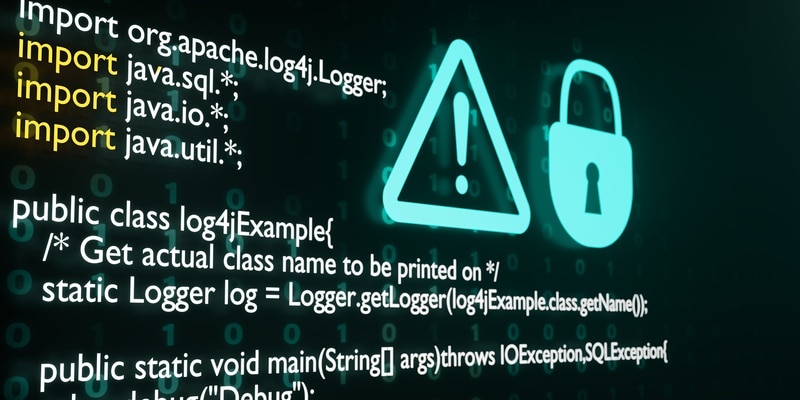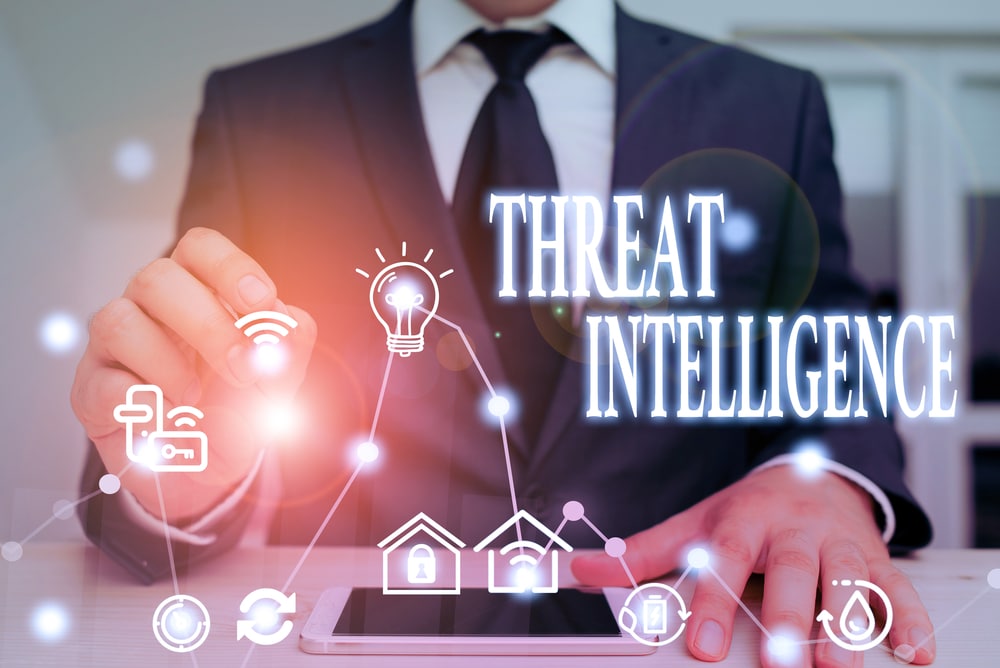
Log4j lessons learned: A blueprint for zero-day defence
Two years ago, the zero-day vulnerability, known as Log4Shell unwrapped itself spoiling holiday celebrations for many across the globe leaving organizations scrambling for a fix before it could be exploited.
The vulnerability was discovered in Log4j, a widely used logging tool used by millions of computers worldwide running online services. Its profound impact on IT environments has called for a fundamental shift in how organizations think about their security strategies.

People cannot be patched
When an organization is aware software is vulnerable, it focuses on patching systems to mitigate the risk. Likewise, when security technology becomes outdated, newer versions plug the gaps. However, with people there’s no patch or update readily available.
Instead, a workforce needs to stay abreast of the current threat landscape to ensure the company remains in a good position to combat cyber risks. However, almost 80 percent of leaders lack confidence in their team's ability to tackle cyber threats effectively. This highlights a substantial weakness in current cybersecurity strategies.

Managing multi-cloud complexity: Frameworks to adopt, pitfalls to avoid, and strategies to bring it all together
As many companies are discovering, a multi-cloud environment can offer improved workload portability, purchasing power and increased innovation velocity, as well as other significant benefits. However, managing a multi-cloud environment can be challenging. From complex integrations to fragmented cost visibility to security and compliance concerns, today’s tech leaders can become overwhelmed.
Competing organizational interests, lack of expertise, and unexpected or hidden costs can detract from the great promise of a multi-cloud environment. Organizations need the right people, processes, and tools to overcome the challenges and realize the rewards.

What does the future hold for content management services?
For many years, organizations have relied on Enterprise Content Management (ECM) systems to help manage information in an efficient and secure fashion. However, with the advent of new content management technologies -- including cloud-based content management systems -- there are signs that the prominence of traditional ECMs is on the wane.
As the challenges faced by businesses continue to grow, achieving new standards of flexibility and efficiency when it comes to content management is key. This is why first-generation ECM systems -- built on decades-old technologies -- are not as effective as they once were.

Leveraging threat intelligence for regulatory compliance
The US Government recently announced that state-sponsored Chinese cyber group Volt Typhoon has compromised multiple critical infrastructure organizations’ IT networks in the US and is preparing “disruptive or destructive cyber attacks” against communications, energy, transport, water and waste water systems.
The announcement, which was supported by national cybersecurity agencies in Australia, Canada, UK, and New Zealand, is a sobering reminder that modern life relies on digital networks. From healthcare, banking, and socializing, to energy, water, local and national government -- everything has a digital aspect. But while digitization has delivered great leaps forward in convenience, speed, and efficiency, it has also introduced risk. Malicious forces wanting to disrupt economies, governments, and people, know that targeting digital networks is the quickest route to maximum cross-border disruption.

Putting a value on open source -- how much is free software worth?
According to a new report by Harvard Business School and University of Toronto researchers,open source contributes trillions of dollars to the global economy. If you look at the direct supply-side valuation for widely used open source software, the valuation is $4.15billion. If you look at the demand-side figures, which cover all the indirect value generated by use of open source, open source software is worth $8.8trillion. When global gross domestic product for 2024 is estimated to be $109trillion, the value of open source comes into far sharper view.
Alongside this valuation, the report authors estimate that -- if open source did not exist -- companies would have to spend around 3.5 times more on their IT and technology investments to get the same results.

Getting up close and personal: How hyper-personalization is driving the next generation of digital applications
As technology continues to converge with our everyday lives, demand for more intuitive digital services is rising. Consumers now expect brands to provide them with more convenience and relevance than ever before.
Personalization within their digital offerings is a key way for businesses to do this, as McKinsey reports that almost three quarters of buyers now expect personalized interactions. However, personalization is just the beginning. To truly meet customer expectations, organizations must go one step further and aim for hyper-personalization.

The importance of security training in the zero trust era
Momentum for zero trust migration is accelerating across the cybersecurity community. It was a fundamental component of the Biden Administration’s 2023 National Security Strategy. Nearly 90% of global organizations have already started implementing basic aspects of a zero trust security model. And in Forrester’s 2024 predictions report, analysts forecast that dedicated roles with “zero trust” in the title are expected to double over the next year.
This is because the need for zero trust authentication has never been clearer. Conventional network security approaches are increasingly vulnerable in today's cloud enterprise environment, where post-pandemic digital transformations, software supply chains, remote work models and bring-your-own-device policies have widened the attack surface. Cloud-based cyberattacks increased by nearly 50 percent in 2022. Meanwhile, more than 10 million people were impacted by supply chain attacks over the same year.

Ways to keep your information safe when gaming online
Keeping your information safe when gaming online reduces the risks of cyberbullying, privacy invasion, and identity theft. The online gaming world is rife with cases of data and information loss due to reasons like shady downloads and virus attacks. However, by implementing some online gaming best practices, avid online gamers can avoid being victims of these situations.
Here are some tested and proven ways to keep your information safe when gaming online.

Six ways your government agency can establish a safer agile ecosystem
Part 2: An organization’s agility is synonymous with its resilience in the face of change. Agility allows enterprises to face industry-spanning challenges without experiencing catastrophic disruption in their operations, and agile software development makes this concept a reality. Beyond that, it ensures organizations can service external and internal stakeholders rapidly and reliably -- and for government agencies, it ensures continuity of mission services.
But in agile organizations, there are unique security risks -- outlined in part one of this series -- such as compromising security processes in the name of speed and differing security practices across cross-functional teams. To safeguard these projects, professionals must create a cybersecurity architecture as unique as the agile environments they’re protecting.

What's the best option for businesses -- open-source or commercial AI services?
In the past year, Generative AI (GenAI) availability for businesses has swept the market, offering significant boosts in productivity. To successfully seize this opportunity, however, businesses will need to ensure they invest in the right solutions.
Faced with options like commercial AI services and customizable open-source Large Language Models (LLMs), business leaders must navigate a complex landscape of risks and benefits. This choice, influenced by factors like speed to market and data security, is crucial for companies looking to strategically invest in GenAI.

AI's challenge to internet freedom
In October 2020, observing International Internet Day, I spoke about the threats to Internet freedom. A lot has happened in less than four years, and a lot has changed. But the threats did not go away. On the contrary, Internet users and their freedoms are in more danger now than ever.
In February 2024, as we observe Safer Internet Day, it is necessary to reiterate that there is no safety without freedom, online or offline. Especially as the enemies of both are now equipped with the most powerful tool for cyber oppression yet -- Artificial Intelligence (AI).

4 types of outages to avoid in 2024 (with cautionary tales from 2023)
Throughout 2023, the tech world witnessed several high-profile outages. Collectively, these incidents cost millions of dollars, and affected tens of millions of end users. Luckily, these negative impacts were not all in vain -- outages like these serve as cautionary tales for organizations as they face the ongoing challenge of maintaining seamless operations in increasingly complex, interdependent environments.
Reflecting on these incidents helps us see how we can safeguard against similar disruptions happening in the future. In this article, we’ll delve into four major types of outages, with lessons to help companies enhance their resilience in 2024 and beyond.

From complexity to clarity: Managing IT landscapes in a hybrid cloud world
IT plays a key role in achieving sustained business success against a backdrop of constantly changing industry and economic challenges. Today’s IT systems not only underpin business operations but enable the projects and initiatives that deliver on every aspect of a company’s business strategy.
Over the last five years, there has been a significant transformation in the business systems and IT landscapes that IT teams are required to manage. The COVID 19 pandemic played a large role in this shift, with businesses having to rapidly incorporate new capabilities to facilitate remote work and maintain daily operations. Over time, these ‘temporary solutions’, plus others that have been implemented since, have become embedded in many organizations.

CIOs: Don't let the cost of cloud migration hold you back
In 2024, one fact is clear: The cloud aids business success. Cloud migration isn't just an operational upgrade but a highly strategic financial strategy capable of unlocking up to $1 trillion in business value. Cloud benefits extend from reduced operating costs -- including infrastructure, labor and energy expenses -- to enhanced scalability and operational efficiency.
Most organizations have caught on to these benefits. Today, more than half of all corporate data exists in the cloud, up from 30 percent in 2015. This dramatic shift illustrates the cloud's crucial role in modern data management and sets the stage for a long-overdue discussion of the cloud's financial implications.

